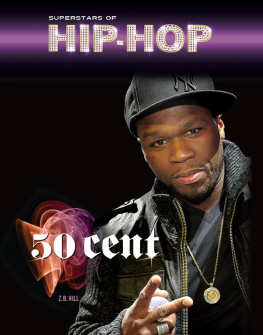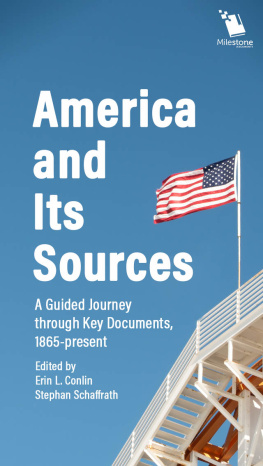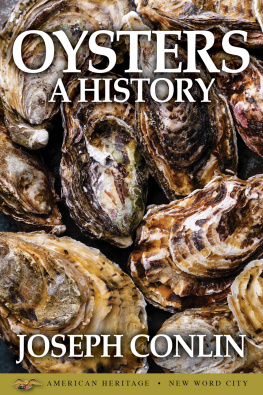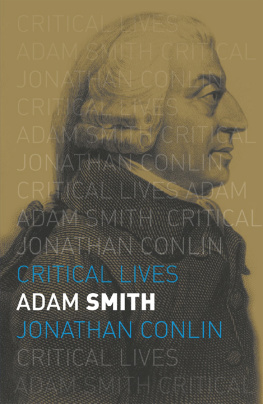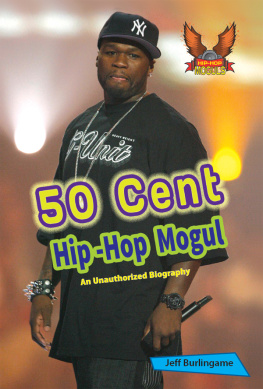Jonathan Conlin - Mr Five Per Cent
Here you can read online Jonathan Conlin - Mr Five Per Cent full text of the book (entire story) in english for free. Download pdf and epub, get meaning, cover and reviews about this ebook. year: 2018, publisher: Profile Books, genre: Non-fiction. Description of the work, (preface) as well as reviews are available. Best literature library LitArk.com created for fans of good reading and offers a wide selection of genres:
Romance novel
Science fiction
Adventure
Detective
Science
History
Home and family
Prose
Art
Politics
Computer
Non-fiction
Religion
Business
Children
Humor
Choose a favorite category and find really read worthwhile books. Enjoy immersion in the world of imagination, feel the emotions of the characters or learn something new for yourself, make an fascinating discovery.

- Book:Mr Five Per Cent
- Author:
- Publisher:Profile Books
- Genre:
- Year:2018
- Rating:5 / 5
- Favourites:Add to favourites
- Your mark:
- 100
- 1
- 2
- 3
- 4
- 5
Mr Five Per Cent: summary, description and annotation
We offer to read an annotation, description, summary or preface (depends on what the author of the book "Mr Five Per Cent" wrote himself). If you haven't found the necessary information about the book — write in the comments, we will try to find it.
Mr Five Per Cent — read online for free the complete book (whole text) full work
Below is the text of the book, divided by pages. System saving the place of the last page read, allows you to conveniently read the book "Mr Five Per Cent" online for free, without having to search again every time where you left off. Put a bookmark, and you can go to the page where you finished reading at any time.
Font size:
Interval:
Bookmark:


THE MANY LIVES OF CALOUSTE GULBENKIAN
THE WORLDS RICHEST MAN
JONATHAN CONLIN

First published in Great Britain in 2019 by
Profile Books Ltd
3 Holford Yard
Bevin Way
London WC1X 9HD
www.profilebooks.com
Copyright Southampton University 2019
The right of Jonathan Conlin to be identified as the author of this work has been asserted in accordance with the Copyright, Designs and Patents Act 1988.
All rights reserved. Without limiting the rights under copyright reserved above, no part of this publication may be reproduced, stored or introduced into a retrieval system, or transmitted, in any form or by any means (electronic, mechanical, photocopying, recording or otherwise), without the prior written permission of both the copyright owner and the publisher of this book.
All reasonable efforts have been made to obtain copyright permissions where required. Any omissions and errors of attribution are unintentional and will, if notified in writing to the publisher, be corrected in future printings.
A CIP catalogue record for this book is available from the British Library.
ISBN 9781788160421
eISBN 9781782834441
For Richard Roberts (19522017)
Black-and-white images
Colour images
All photographs not otherwise credited above are copyright Calouste Gulbenkian Foundation, Lisbon
Although Gulbenkian referred to his home city as Constantinople rather than Istanbul, both names were used in the nineteenth century. For conveniences sake I have used Istanbul throughout. I use modern spellings when referring to other places within todays Republic of Turkey. In keeping with the practice of the British Journal of Middle Eastern Studies and other journals, I do not transliterate Arabic, Armenian or Persian personal or place names where a Europeanised version exists (hence Mosul, not Mawsul).
To provide a sense of scale, some of the historical values cited in the text are immediately followed by sterling or dollar equivalents in parentheses (or square brackets, where a value appears in a quotation). These are estimates of the 2015 RPI equivalent of the historical value in question, made using Lawrence Officer and Samuel H. Williamsons Purchasing Power Calculator, accessible online at www.measuringworth.com.

The Red Line Agreement of 1928
Every map has its legend. The map attached to the Red Line Agreement of 31 July 1928 is no exception. This agreement saw the companies we know as BP, ExxonMobil, Total and Royal Dutch-Shell join forces in the Middle East. Instead of fighting each other for control of the regions oil, they would collaborate in a joint venture: the Turkish Petroleum Company. TPC was Calouste Gulbenkians baby, or rather his house, established in 1912. In 1914 the British Foreign Office had given its blessing: rival powers were to cooperate not only in the oil-rich Ottoman provinces of Mosul and Baghdad, but in the entire Ottoman Empire in Asia.
In 1928, however, the Ottoman Empire in Asia was a distant memory. In the First World War the empire had collapsed, triggering a wave of genocidal violence which killed a million of Gulbenkians fellow Armenians. A patchwork of French and British mandates and protectorates was developing into new nation-states we know today as Iraq, Jordan and Saudi Arabia. Unsurprisingly, therefore, when it came to defining the Ottoman Empire in Asia as it had been in 1914, the oilmen who found themselves in Ostend that day in 1928 were in something of a fix.
All was confusion until Calouste Gulbenkian intervened:
When the conference looked like foundering, he again produced one of his brainwaves. He called for a large map of the Middle East, took a thick red pencil and slowly drew a red line round the central area.
That was the Ottoman Empire which I knew in 1914, he said. And I ought to know. I was born in it, lived in it and served it. If anybody knows better, carry on
Gulbenkians TPC partners inspected the map, and it was good. This account, taken from Ralph Hewinss 1957 biography, continues: Gulbenkian had built a framework for Middle East oil development which lasted until 1948: another fantastic one-man feat, unsurpassed in international big business.
The 1916 SykesPicot Agreement had seen woefully ill-informed imperial proconsuls carve out Syria, Iraq and Jordan using a series of straight lines, lines which paid scant regard to physical or human geography. Perhaps the most notorious example is Churchills Sneeze, the triangular indent in Jordans southern border that supposedly resulted from the statesmans momentary distraction in 1921. In Hewinss account Gulbenkians gesture is more sprezzatura than sneeze, and is accompanied by claims to an expertise the others around the table lacked, expertise born of personal and professional experience. The tone and the narrators portentousness, however, lend Gulbenkian the statesmans authority to determine the fate of millions with the stroke of a pen.
In his lifetime Gulbenkian studiously avoided the press, to the extent that today those who recognise the name often confuse the secretive Calouste with his publicity-seeking son Nubar; Londoners in particular fondly recall Nubars chauffeur-driven taxicab. Caloustes secretiveness has previously made it difficult to establish even basic facts about his family, education and career. Many contemporaries and some historians have equated such secretiveness with duplicity, rather than modesty. It is common to find Gulbenkian referred to as a shadowy Armenian manipulator, a detested figure whose influence, like his 5 per cent, derived from the liberal dispensation of bribes.
Other oil histories have been kinder. In his Pulitzer-winning history of the oil industry, The Prize, Daniel Yergin places Gulbenkian on a par with the great Rockefeller, Getty and Mattei as one of the great buccaneer-creators of oil. If Calouste Gulbenkian is known today it is as the man who drew the red line, a milestone in the history of the oil industry and the Middle East. The 1928 Red Line Agreement embodied Gulbenkians personal claim to 5 per cent of TPCs oil, a claim which he later vested in a company, Partex, which continues to this day.
Yet on closer inspection the legend falls apart. Although the map was certainly left until the final phase of the negotiations that culminated at Ostend, Gulbenkian showed little interest in it. The map does not feature in the memoirs Gulbenkian dictated for private circulation in 1945. He was not even at Ostend that fateful day. The anecdote is one of several myths invented by Gulbenkians son, which tell us more about Nubars feelings for his father (pride, resentment, sometimes affection) than they do about the man himself.
Disposing of the red line legend might seem foolhardy in a biographer. Yet it is important to recognise that the others round this table were powerful empires and multinational companies, staffed by hundreds of employees, backed by armies of soldiers and sailors, as well as taxpayers and shareholders. They were hardly going to let Gulbenkian, an individual with no company or state behind him, scrawl red lines over their maps. Gulbenkian had fought hard to get his quarrelsome British, French and American partners to agree to cohabit in his house, and successfully defeated repeated attempts to defenestrate him. But he was not particularly bothered about the course of the red line itself. Nor was it his style to make pretty speeches. He worked as a back-room fixer, an intermediary between the worlds of business, diplomacy and high finance, a figure very different and more interesting than the Gulbenkian of legend.
Next pageFont size:
Interval:
Bookmark:
Similar books «Mr Five Per Cent»
Look at similar books to Mr Five Per Cent. We have selected literature similar in name and meaning in the hope of providing readers with more options to find new, interesting, not yet read works.
Discussion, reviews of the book Mr Five Per Cent and just readers' own opinions. Leave your comments, write what you think about the work, its meaning or the main characters. Specify what exactly you liked and what you didn't like, and why you think so.

